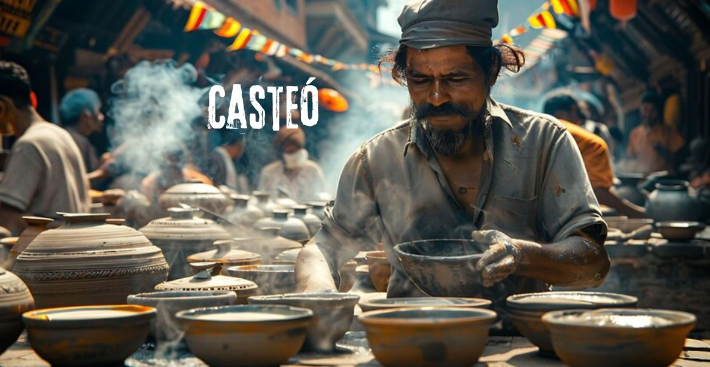Casteò is a time period that may not be immediately familiar to many, however it represents an intersection of various sociocultural dynamics that are good sized inside the modern international. The phrase itself seems to be a portmanteau, combining components of ‘caste,’ a traditional shape of social stratification, and doubtlessly a suffix denoting cultural or social phenomena. To absolutely apprehend Casteò, we need to delve into its components, origins, implications, and the wider context in which it exists.
Understanding Caste: Historical and Cultural Context
Caste systems are deeply embedded in numerous societies round the world, maximum significantly in South Asia. The caste device in India, as an example, is an historical social hierarchy that has historically divided humans into wonderful organizations primarily based on their occupation and start. This stratification has profound implications for social interactions, financial possibilities, and cultural practices. The number one category, referred to as varnas, include Brahmins (clergymen and students), Kshatriyas (warriors and rulers), Vaishyas (investors), and Shudras (employees). Below those, the Dalits, formerly called ‘untouchables,’ have faced excessive discrimination and exclusion.
While the caste machine in its traditional shape is most associated with Hindu society, similar structures exist in other cultures and religions, highlighting a widespread tendency towards hierarchical social business enterprise. In numerous elements of the sector, caste-like distinctions affect access to resources, training, and social mobility, perpetuating cycles of poverty and inequality.
The Evolution of Casteò: Modern Interpretations
Casteò appears to be a present-day reinterpretation or critique of traditional caste systems. In modern globalized international, conventional social limitations are more and more questioned and challenged. Casteò could represent a try to reframe or apprehend those historical systems in mild of modern-day values together with equality, human rights, and social justice.
This term might be used to explore how conventional caste differences persist or rework in modern-day societies, mainly in urban settings where financial and social mobility is better. It can also take a look at the intersections of caste with other varieties of social stratification, inclusive of race, ethnicity, gender, and class. Understanding Casteò requires a multidisciplinary method, incorporating insights from sociology, anthropology, records, and political technological know-how.
Casteò and Social Justice Movements
One of the key regions in which Casteò is applicable is in social justice actions. Around the world, marginalized groups are fighting for recognition, rights, and possibilities. In India, for instance, the Dalit motion seeks to dismantle the oppressive structures of the caste system and promote equality. Internationally, parallels may be drawn with movements like Black Lives Matter, which challenges systemic racism and advocates for the rights of Black people.
Casteò may want to serve as a framework for analyzing these movements, knowledge the similarities and differences of their struggles, and drawing lessons that may be implemented throughout unique contexts. It highlights the importance of intersectionality, a idea popularized by means of Kimberlé Crenshaw, which emphasizes how numerous forms of social stratification overlap and intersect, shaping the studies of marginalized individuals and agencies.
The Impact of Globalization on Casteò
Globalization has a profound impact on social structures, which includes caste. Migration, financial interdependence, and the drift of statistics and ideas throughout borders mission conventional social hierarchies. For many people from caste-affected communities, migration gives an opportunity to break out the inflexible obstacles of their social origins and are seeking for new opportunities.
However, globalization also can give a boost to inequalities. For example, migrants frequently face discrimination in their new nations, and global economic regulations can exacerbate disparities among wealthy and poor international locations. Understanding Casteò in the context of globalization involves examining how those dynamics play out in distinctive components of the arena and affect unique communities.
Casteò in Popular Culture and Media
Popular lifestyle and media play a vital position in shaping perceptions of caste and social hierarchy. Films, television shows, literature, and social media can both mission and improve stereotypes. In latest years, there has been a developing focus and critique of caste-based totally discrimination in numerous sorts of media.
Movies like “Article 15” in India directly cope with caste discrimination, sparking public debate and growing consciousness. Similarly, literature from Dalit authors gives a powerful voice for marginalized groups. The global reach of media also way that testimonies and experiences associated with caste can gain worldwide attention, fostering team spirit and knowledge across special cultures.
Conclusion: The Future of Casteò
The idea of Casteò invites us to reflect on the long-lasting nature of social hierarchies and the possibility of transcending them. As societies evolve and new demanding situations emerge, expertise and addressing the complexities of caste and other forms of social stratification become an increasing number of essential.
In the destiny, Casteò ought to function a beneficial framework for scholars, activists, and policymakers to analyze and address troubles of inequality and discrimination. By examining the intersections of caste with other social classes and considering the impact of globalization and media, we will broaden extra nuanced and powerful techniques for promoting social justice and equality.
